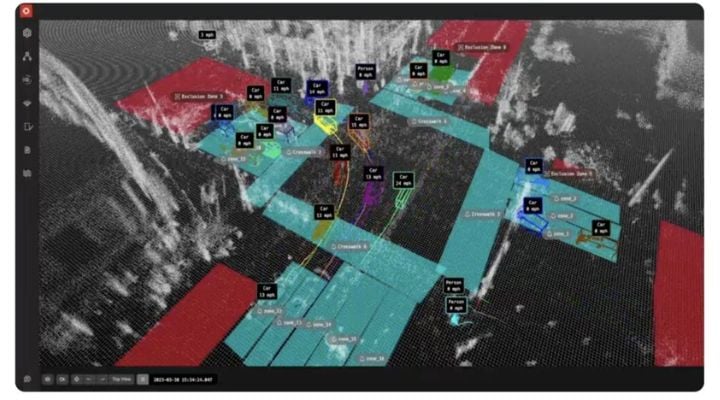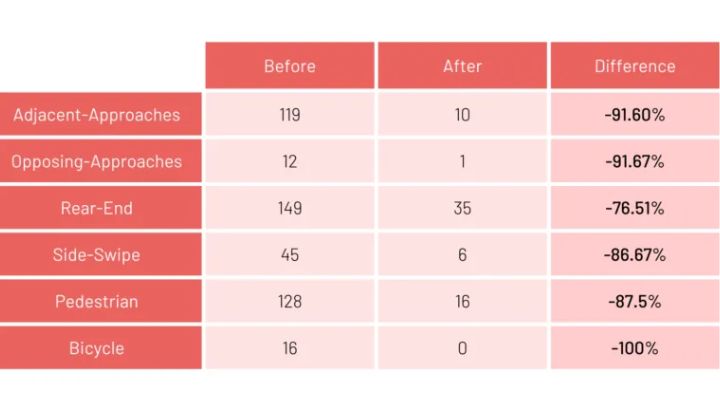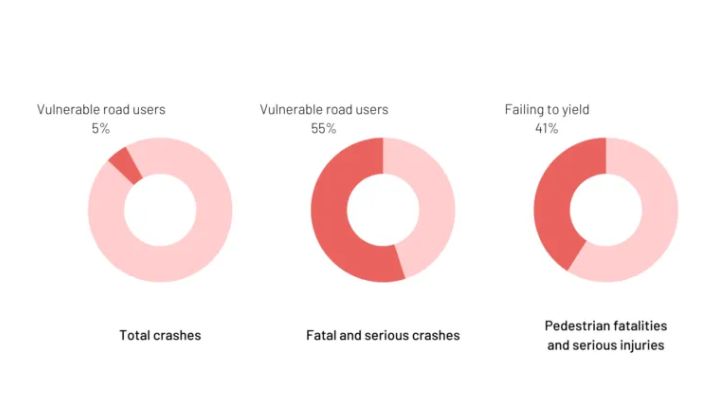How lidar tech can facilitate safer, smarter transportation
The rapid expansion of urban populations is exerting pressure on city infrastructures, leading to increased traffic, more frequent accidents, and higher levels of pollution. Europe’s congestion costs amount to approximately €110 billion (US$120 billion) each year, and the USA faces an US$87 billion (€79.5 billion) cost, highlighting the urgency for smarter transportation solutions.
With the automotive industry expected to grow by 2% annually until 2030, according to McKinsey, the need for intelligent transportation systems (ITS) becomes even more pressing.
These systems are essential for transforming cities into safer and more intelligent communities.

3D lidar data, when processed with real-time software, delivers unique insight at intersections
Monitoring the flow of vehicles and pedestrians is key to creating smarter, safer cities. This process helps in the efficient allocation of resources, reduction of emissions, and prevention of accidents.
Lidar technology stands out for its ability to provide precise and detailed 3D spatial measurements, functioning effectively in various lighting conditions, and respecting the privacy of citizens by not capturing identifiable information.
In ITS, lidar technology is valuable for traffic monitoring, enhancing the safety of intersections, identifying at-risk road users, and preventing potential accidents. However, the complexity of lidar data, particularly when integrating multiple devices, can be a challenge, especially for real-time traffic management applications.
Outsight’s 3D lidar data software solutions are designed to tackle these challenges. They process large volumes of data at the source, converting it into a more manageable form that requires less bandwidth, facilitating low-power wireless communication.

Conflict count at Bellevue: before and after Outsight’s solution deployment
Safety applications
prime example of this technology in action is in Belleville, Washington, where Outsight’s systems have been implemented to manage traffic intersections with the goal of eliminating traffic-related deaths and serious injuries.
Bellevue’s collaboration with Outsight is more than a traffic reduction effort; it’s a life-saving mission. Although pedestrians and cyclists account for only 5% of traffic incidents, they make up 55% of fatal and serious injuries, with 41% of these severe cases being due to failure to yield.
The outcomes of implementing the technology and improving the intersection’s markings and layout are astounding, including a reduction of 91.6% in adjacent-approaches events and 0 occurrences involving bicycles, vs 16 previously (see above table).

People walking and cycling represent just 5% of all crashes, however, they account for 55% of all fatal and serious crashes.
The collaboration between Bellevue and Outsight exemplifies ITS’s transformational potential. Cities can better manage resources, lower pollution, and prevent accidents by combining ITS with lidar technologies. The added benefit of protecting citizens’ privacy makes these solutions even more appealing.
In conclusion, the integration of ITS and lidar technology is proving to be an effective solution for the challenges faced by modern urban centers. As cities continue to grow, the need for efficient, safe, and environmentally friendly transportation becomes paramount.
The ability of lidar to provide accurate data without compromising privacy is a game-changer, offering a blueprint for cities worldwide to follow. With the reduction of accidents and the optimization of urban flow, ITS stands out as a beacon of innovation, guiding us towards a more sustainable and secure urban future.



